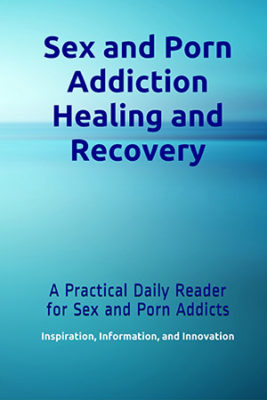Moving from Porn Sex to Healthy Sex
 Scott Brassart
Scott Brassart
To develop healthy sexuality, problematic porn users must first:
- Identify and change their sexual behavior patterns (their cycle of porn use).
- Learn to manage their feelings in healthy ways, rather than always turning to pornography.
- Identify and begin the process of healing unresolved trauma.
Then, porn users must deal with the super-stimulant nature of pornography, recognizing that in recovery, they must not search for or try to re-create the emotional and sexual intensity provided by digital imagery.
Often, problematic porn users will need to grieve the loss of this intensity. This means they must accept that the intensity supplied by porn is unsustainable, unhealthy, and ultimately unsatisfying. Yes, porn brings intensity, but it does not meet their underlying need for emotional intimacy and connection.
In the early stages of recovery, many porn users find that, without pornography, their sexual desire goes dormant. They find themselves dealing with erectile dysfunction (ED), delayed ejaculation (DE), and anorgasmia (the inability to reach orgasm). From a neurobiological standpoint, this is expected. Still, it can be distressing to the individual. The good news is this situation is likely to be temporary. Typically, the reward center of the brain heals in six months to a year, and normal sexual functioning returns.
And let’s be honest: In early recovery, a loss of interest in sex coupled with sexual dysfunction can be a blessing in disguise.
In the interim, recovering porn users can begin to focus on and develop the seven dimensions of healthy sexuality. Usually, by the time they reach dimension six (see below), they are solidly sober from pornogrpahy, their brains have (mostly) healed, and they are emotionally ready to move forward with real-world romance and sexuality.
The seven dimensions of healthy sexuality are as follows:
- Self-Nurture: The process of taking care of yourself and feeling better about yourself. What activities, environments, and experiences enhance and nurture you?
- Sensuousness: Developing body awareness and learning to stimulate all of the senses. What activities, behaviors, or environments add to your body awareness and stimulate your senses?
- Relationship Intimacy (General): Enjoying the company of friends and family. How can you enjoy being with friends and family?
- Partner Intimacy: Enjoying the company of your significant other without being sexual. How can you be with your partner without being sexually engaged?
- Non-Genital Physical Touch: Giving and receiving physical pleasure without genital contact. How can you and your partner physically please one another without genital contact?
- Genital Sexuality: Enhancing, sustaining, and enriching genital sexuality. How can the genital expression of your sexuality be enhanced, sustained, and enriched?
- Spiritual Intimacy: Adding meaning and turning sex into an expression of feelings, values, and connection. How can all these dimensions be made more meaningful?
Happily, many problematic porn users, when they step away from porn and learn to practice all seven dimensions of healthy sexuality find that real-world sex with an intimate partner is far more rewarding than pixel sex ever was. No, they do not experience the intensity (the dopamine and adrenaline rush) that porn once provided, but neurochemicals related to feelings of intimate connection (such as serotonin and oxytocin) more than make up for this loss.
* * * * * * * * * *
If you or someone you care about is struggling with pornography, help is available. Seeking Integrity offers inpatient treatment for sex and porn addicts, as well as low-cost online workgroups, including a porn-specific workgroup.

